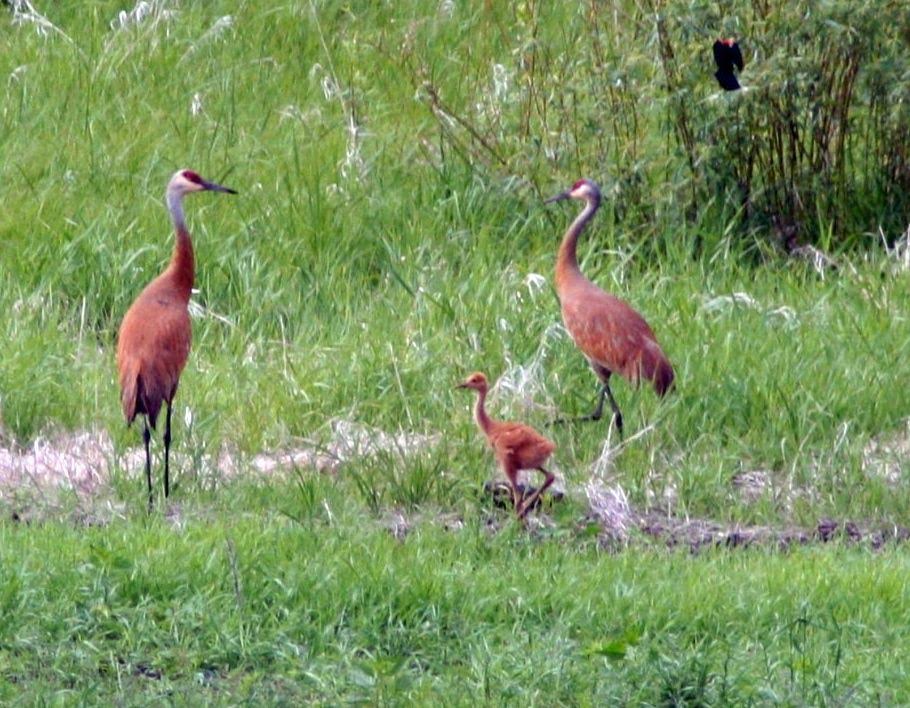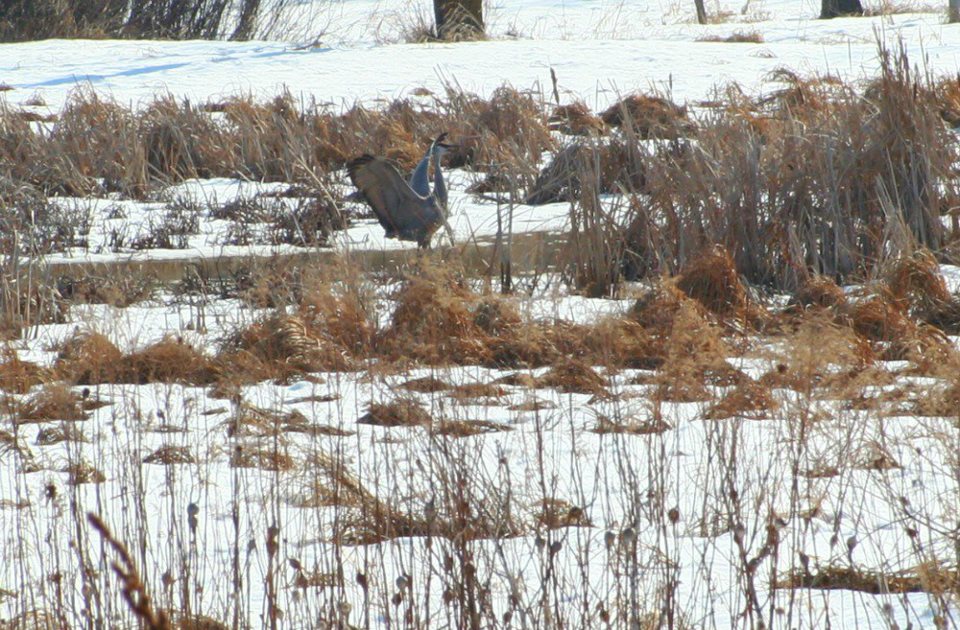One event that marks the seasons around here is the return of the Sand Hill Cranes. They've been coming to our farm for over ten years now. This year my first sighting of them was on Sunday, March 11, though Jeff, an employee, said her saw some in St. Joseph on March 6. This, so far that's the earliest sighting this year in these parts. If any blog readers in this earlier have seen them earlier, please let me know.
This is a bit of a "Where's Waldo?" photo in that the cranes are inconspicuous. Indeed, I hope you can spot them (hint: through the triangle made by the tree branches). But that is partly the point. When one lives on an open landscape, a habit of scanning the horizon ensues. One never knows when we'll catch a glance of a deer, coyote (which is rare, but we hear them and so know they are there) or, in this case, a pair of Sand Hill Cranes.
Their arrival does seem early, probably because of the snow. But, because I have not written down their arrival times in the past, I can't be sure (which is, in part, the point of this blog).
They are migratory, spending their winters in Texas and along the Gulf Coast. Their migration route takes them through Nebraska, where they gather for awhile on the Platte River. Chris Helger tells us in his blog, The Prairie Ecologist, that they arrive in Nebraska around Valentine's Day. And so a month later they arrive here.
Sand hill Cranes on the Platte River (photo by Evan Barrentos, The Prairie Ecologist)
They nest down in a wetland pond on our property, where they are difficult to spot. After they've hatched their eggs, they like to come up on the prairie, which we usually burn in the spring. They seem to like the openness of that prairie, perhaps because it allows them to see their predators, who are after their young. They also like to eat the succulent shoots of a recently burned prairie.
Sand Hill Cranes grazing on our prairie where it meets the wetland.
They are very large birds, with a wing span up to six feet. But their signature is their sound, which is difficult to describe. One thing that can be said is that it sounds primeval. It sounds like how I image those dinosaur birds, the Pterodactyl, would have sounded, just before they sweep down and snatch me up in their jaws. Thus when I hear them, I instinctively look to the sky.
That they have chosen our wetland to nest and raise their young every year is truly an honor for us. They are more than guests, they are part-owners in this 73 acre farm, along with the other insects, plants, birds, and human and non-human animals who dwell here.
Just as many Minnesotans have their "summer homes" on one of Minnesota's 10,000 lakes, these Sand Hill Cranes have their "summer home" in Minnesota. I imagine them on the Gulf of Mexico in January being asked by the other cranes what they'll be doing this summer. And they say, "Oh we spend our summers on a wetland on a farm on the edge of St. Joseph. The water's clean and the fishing is good. But don't tell anyone. We don't want to see it over-developed."
One of our Sand Hill Cranes crying out in the wetland on a previous snowy arrival.




